The Writer With The Snake Tattoo
Sometimes your latest book has a way of getting under your skin, staying with you long after publication – as author Louisa Treger explains.
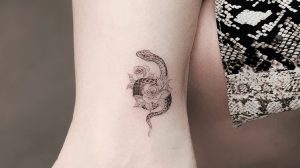 I decided to get a tattoo to commemorate the publication of my second novel, The Dragon Lady, and to celebrate its protagonist, Lady Virginia Courtauld.
I decided to get a tattoo to commemorate the publication of my second novel, The Dragon Lady, and to celebrate its protagonist, Lady Virginia Courtauld.
She was a woman who refused to live by the rules. At her Catholic school, she was known for putting white mice under the nuns’ habits and escaping out of windows. In her late teens she had a savage black snake tattooed down her right leg from ankle to thigh.
“She was bewitching,” said her niece, Margaret Bernard, following her death in 1972. “She had enormous charm, and she was full of character and life. She didn’t care what she said to anyone, or what she did.”
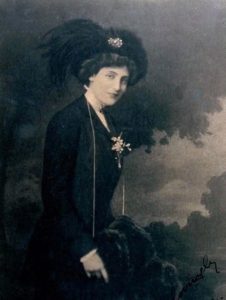
Lady Virginia Courtauld
Born in Romania in 1885, Virginia was the youngest child of a prosperous shipping merchant, Riccardo Peirano, and Rosa Balint, a Romanian peasant. She also claimed to be the great-great-great-great niece of Vlad the Impaler.
After a brief marriage to an Italian count, she married Stephen Courtauld, a war hero, mountaineer, orchid collector and heir to a textile fortune. Despite – or perhaps because of – their differences, the union between the serious, introspective Stephen and the racy, vivacious Virginia, was a happy one.
Together, they built an art deco mansion at Eltham Palace, an epitome of decadence and modern design. They became renowned for their stylish and extravagant entertaining. Among their notable guests at Eltham were Queen Mary, who visited twice, and the late Queen Mother, then Duchess of York. One wonders what English society made of their hostess, a tattooed divorced foreigner, accustomed to saying whatever popped into her head. She kept a lemur, called Mah-Jongg, as a drawing-room pet and he became infamous for biting those guests he disliked under the dinner table.
After the Second World War the Courtaulds moved to the Eastern Highlands of what was then Rhodesia, where they built La Rochelle, a replica French chateau, and filled it with superb art. They were progressive liberals who wanted a just and non-racist society, yet their attempts to better the lives of all the colony’s inhabitants, black and white, proved unpopular and dangerous. It is this conflict that forms the heart of The Dragon Lady.
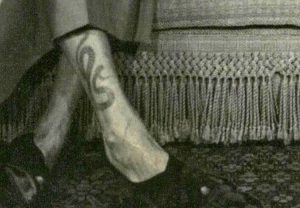
Virginia Courtauld’s tattoo
Virginia was an inspiring woman, then, and truly worthy of being celebrated. She was passionate and very loyal, and she had the courage to stand up for what she believed was right. She also exuded a delicious air of scandal, as demonstrated by the snake tattoo, with the truth of its origins never known due to her inclination to tell a different story every time she was asked about it: it was a teenage dare, a coded message for a lover, a membership badge to a secret society. I do have my own theory about why she had it done, but I would rather not reveal it. I would like people to read The Dragon Lady and decide for themselves.
After I’d finished writing the novel, I started to think about getting a tattoo of my own. “You should go to Bang Bang Studios in New York,” advised a friend who knows about such things. He showed me some of the studio’s work; very light, very subtle. I fell in love with it.
The appointment was booked on 11 September, while I was on tour in the US to promote The Dragon Lady. It somehow felt right to have my tattoo done in New York, on my book tour. The studio was light and airy, a bit like a hairdresser’s salon, except with beds instead of chairs. It was full of heavily inked men and women getting new tattoos done – I was the only tattoo virgin.
Beforehand, I had sent the design I wanted, based on The Dragon Lady’s cover, to my tattoo artist, Jay Shin, a gentle, courteous, and hugely talented man. At the beginning of the session, he showed me his sketches in various sizes and asked where on my body I wanted the tattoo. I knew that it had to go somewhere that doesn’t wrinkle, for at my age this is a very real consideration! We decided on the inside of my leg, just above my ankle.
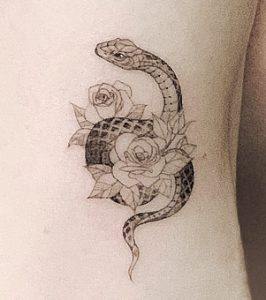 Jay’s sketch turned out to be a transfer, which he applied to my skin, and then he rubbed on numbing cream, and went over it with a needle and permanent ink. The pain was not worse than a leg wax, although as the appointment went on, the anesthetic began to wear off, and it did get more disagreeable. It took about an hour and a half, and there was no swelling or redness afterwards.
Jay’s sketch turned out to be a transfer, which he applied to my skin, and then he rubbed on numbing cream, and went over it with a needle and permanent ink. The pain was not worse than a leg wax, although as the appointment went on, the anesthetic began to wear off, and it did get more disagreeable. It took about an hour and a half, and there was no swelling or redness afterwards.
There was another reason for my tattoo. It was also to mark a new stage in my personal life, for I had just made a decision to leave my marriage of 22 years – a decision that was scary and traumatic, but ultimately positive.
In my post-marriage incarnation, I resolved to live as vividly as I could, in every possible way. I didn’t want to be afraid of major decisions, or opening myself up to new experiences, or change, or taking risks, or even messing things up. I had a permanent image fixed on my skin to celebrate finally being comfortable in my skin.
My tattoo, then, marks something profound. It marks a key moment in my life; it is about trusting myself and being true to myself, both personally and creatively. It is very much in the spirit of Virginia Courtauld, and I hope she would approve! I love my snake tattoo and have never once regretted getting it done. The only question mark in my mind is whether to get a tattoo for every book I publish…
—
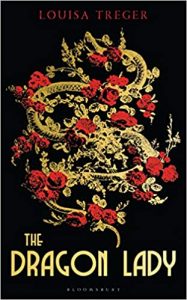 The Dragon Lady by Louisa Treger was published in paperback on 20 February, 2020.
The Dragon Lady by Louisa Treger was published in paperback on 20 February, 2020.
Her previous novel, The Lodger, the first biographical novel about Dorothy Richardson, lover of HG Wells and central figure in the emergence of modernist fiction, also came out in paperback on the same day.
Find out more about The Dragon Lady.
Read SD Sykes’s review of this book.
Images:
Portrait of Virginia Courtauld, photograph of Virginia’s and Louisa’s tattoos: supplied by author.
Portrait of Virginia Courtauld, photograph of Virginia’s and Louisa’s tattoos: supplied by author.
Category: On Writing






























